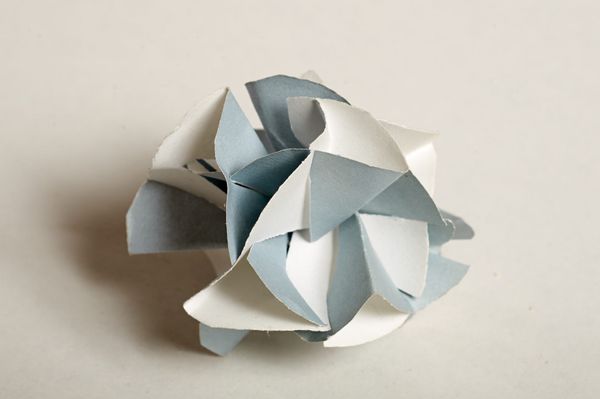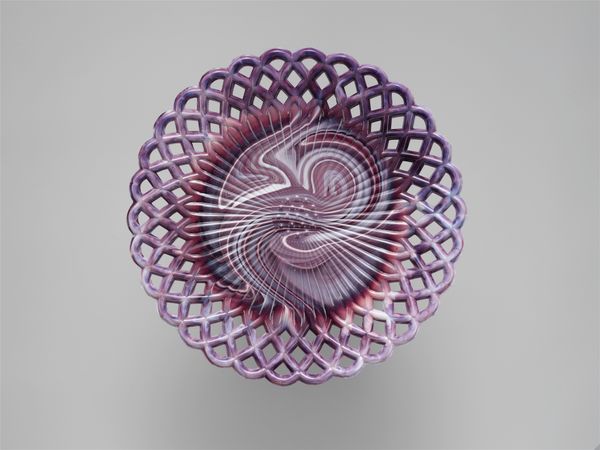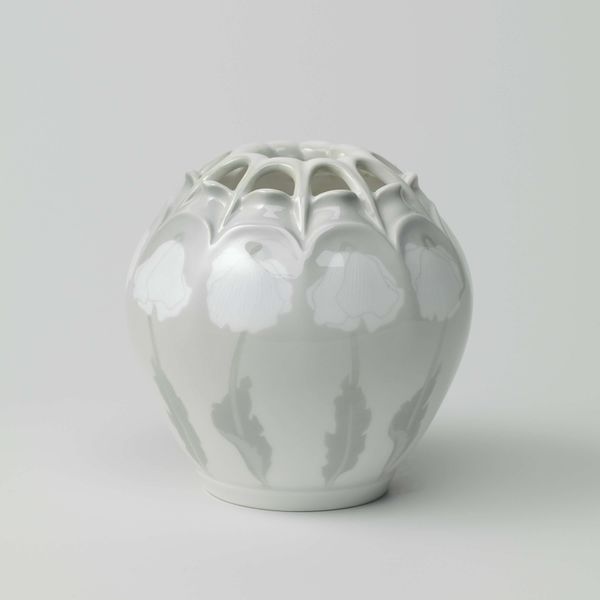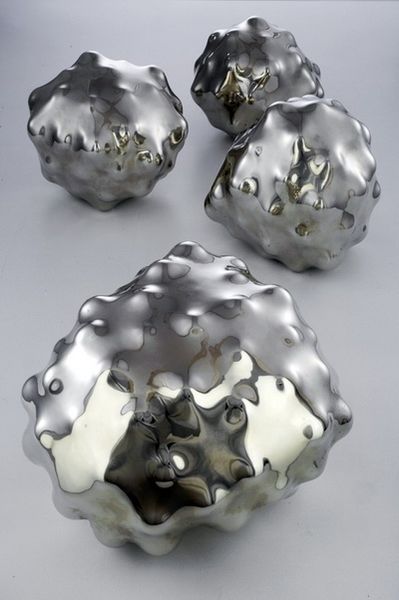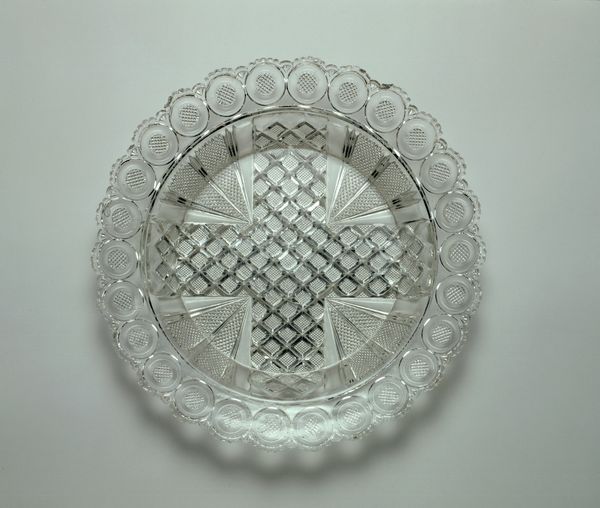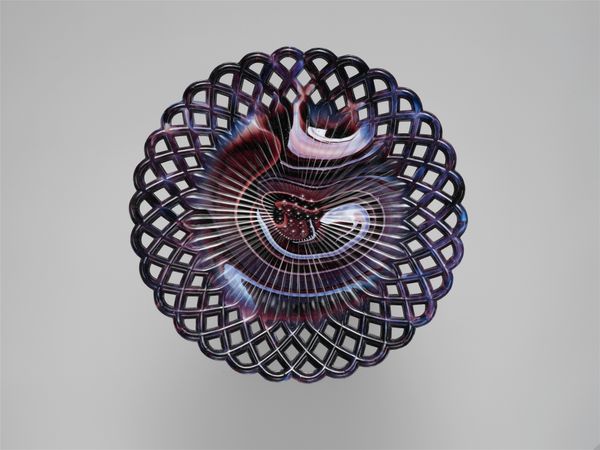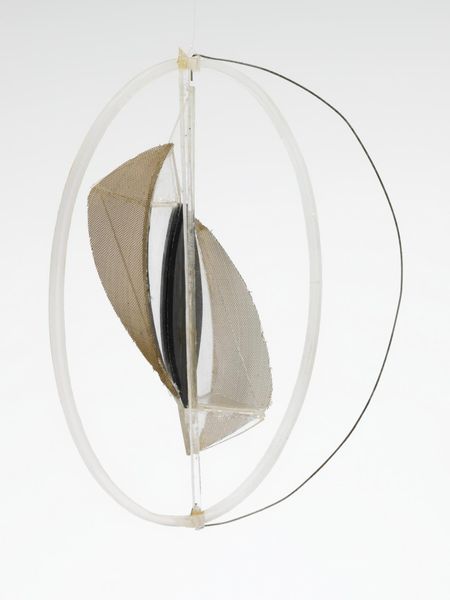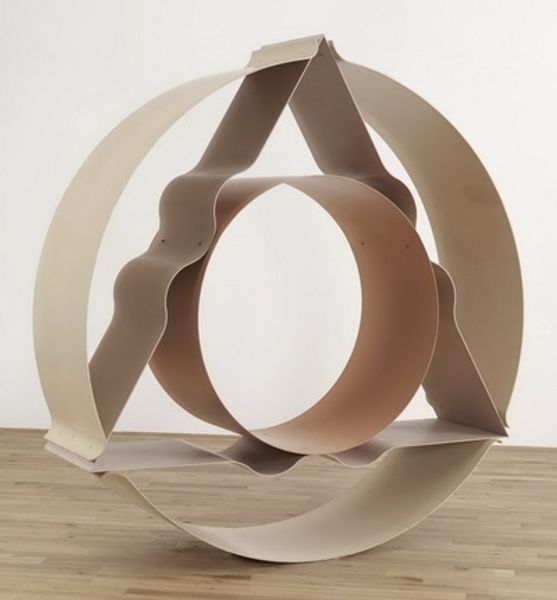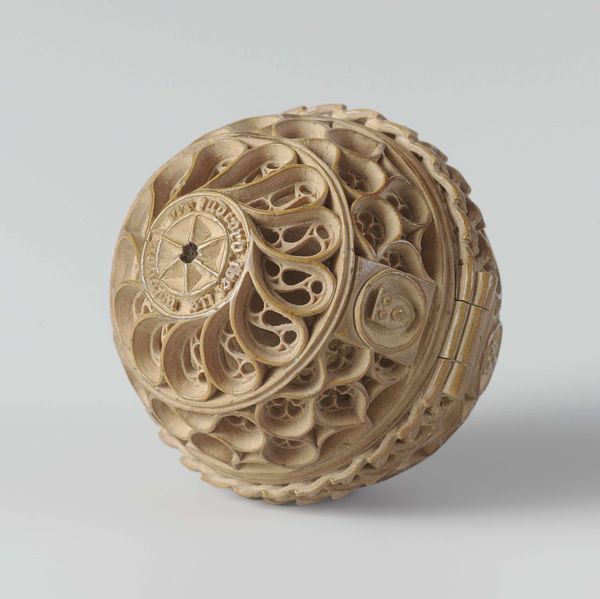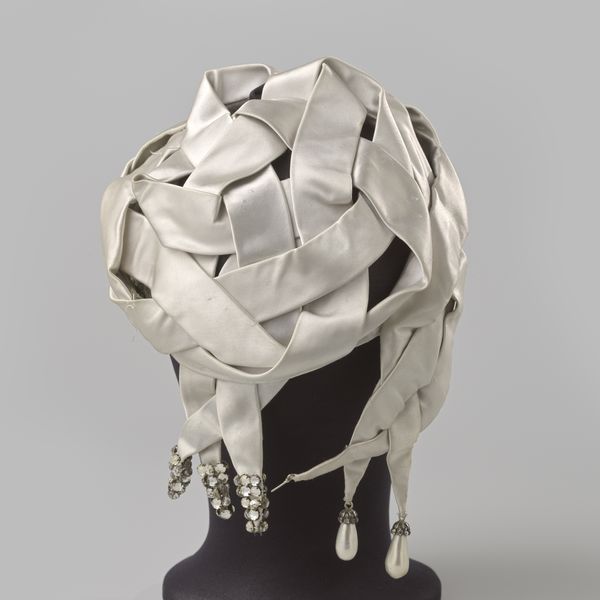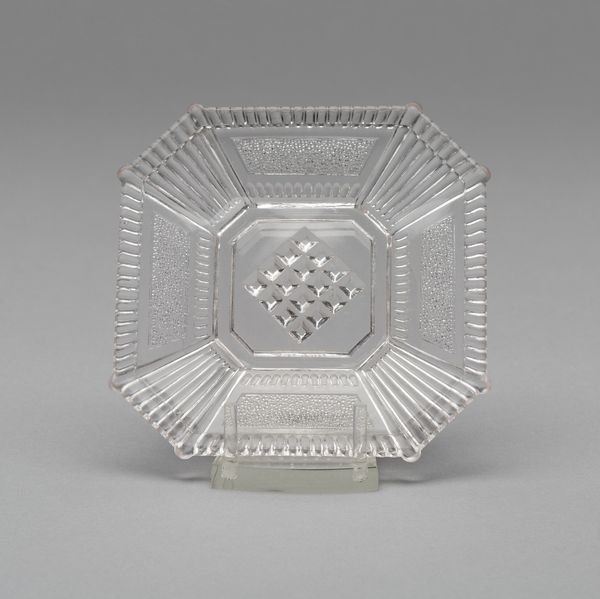
metal, sculpture, installation-art
#
round shape
#
kinetic-art
#
3d sculpting
#
3d model
#
arte-povera
#
3d printed part
#
rounded shape
#
metal
#
virtual 3d design
#
round design
#
sculptural image
#
3d shape
#
geometric
#
sculpture
#
installation-art
#
3d modeling
Copyright: Bruno Munari,Fair Use
Curator: Right now, we're looking at Bruno Munari's sculpture, "Aconà Biconbì," created in 1965. It's crafted from metal, an almost industrial-looking installation piece. Editor: It's got this sci-fi meets flower-power vibe, doesn't it? All sharp angles and shiny metal, but those circular cutouts give it a surprisingly light and airy feel. I want to see it spinning! Curator: Exactly. Munari was deeply engaged with ideas around kinetic art and modularity. This work highlights his interest in transforming everyday materials through industrial processes into something almost playful, something dynamic. Editor: I love that "playful" is what you get from this. For me it's a bit menacing—like a futuristic weapon that could unfold and take over a small village! What about the process of actually making something like this? Seems intricate and precise. Curator: It’s about serial production but with an artistic twist. Munari was constantly challenging the distinction between high art and design, asking us to reconsider what constitutes 'art' in an age of mechanical reproduction. These repeated geometric forms, expertly fabricated and assembled, are what define it. The materials speak to this focus on the industrial. Editor: I get that. Thinking about the Arte Povera movement it has connections with, what if instead of shiny metal it was cardboard or reclaimed plastic? Would that change how we experience its message, about art versus manufacturing? Curator: Absolutely. The choice of metal lends a certain authority, a kind of immutable presence that the more ephemeral materials you suggest would disrupt. It makes us reflect on the optimism and material possibilities that post-war Italy was embracing at the time. Editor: It almost anticipates the digital age; each shape, each connection looks like it could be endlessly replicated in the Metaverse! This industrial 'flower' then is much more relevant than it was even five years ago. Curator: I agree; Munari’s exploration of form and material remains remarkably prescient. Seeing how technology has evolved our interaction with designed space and mass-produced objects, Aconà Biconbì takes on an additional layer of commentary. Editor: So next time I see a geodesic dome, I can think of Munari critiquing its manufactured, reproducible status...mind blown! Curator: That's what I hope people take away – a deeper understanding about process, social history, and seeing potential beauty even within factory-made constructs.
Comments
No comments
Be the first to comment and join the conversation on the ultimate creative platform.
